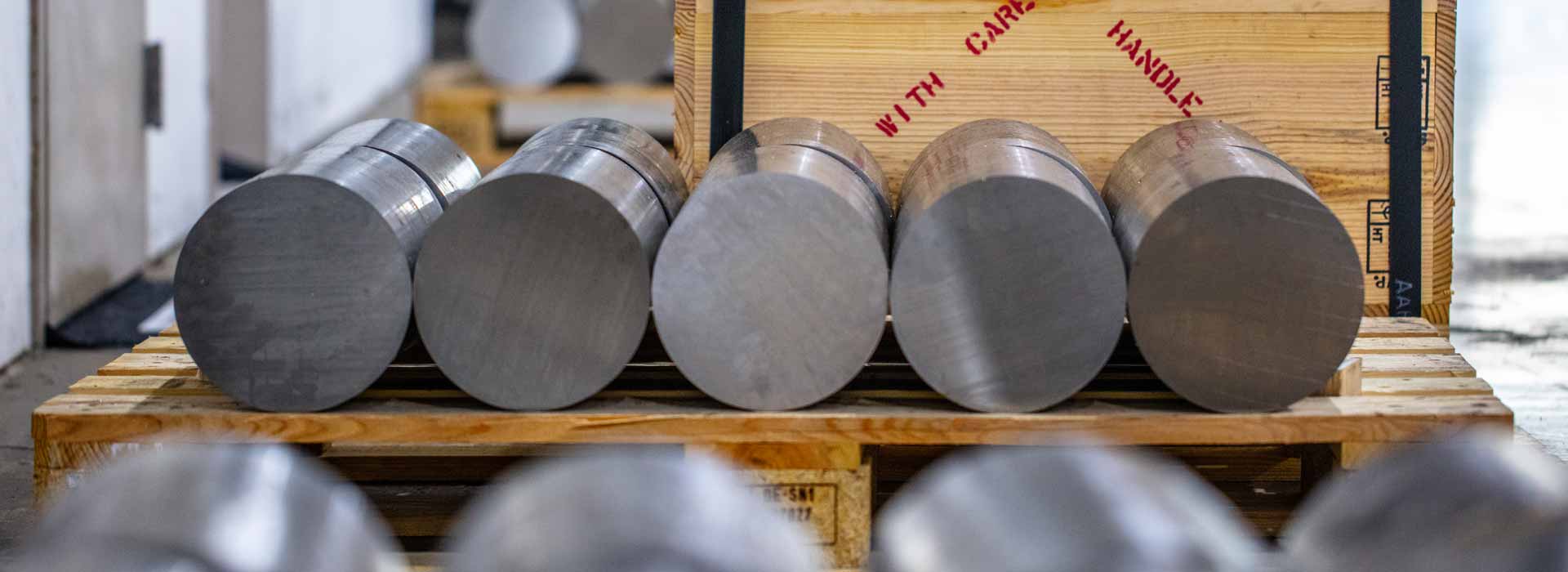Usually supplied quarter hard rolled, extra precision rolled with sheared edges. Carbon content 1.25?Chromium .15. Usually supplied in a 2" width from .002 to .035. Used for cutting the eye of needle and milling the latch in a latch needle,
A structure in which the crystals of one constituent are surrounded by envelopes of another constituent which gives a network.
(Chemical symbol Ni) - Element No.28 of the periodic system; atomic weight 58.69. Silvery white, slightly magnetic metal, of medium hardness and high degree of ductility and malleability and resistance to chemical aid atmospheric corrosion; melting point 2651?F.; boiling point about 5250?F., specific gravity 8.90. Used for electroplating. Used as an alloying agent, it is of great importance in iron-base alloys in stainless steels and in copper-base alloys such as Cupro-Nickel, as well as in nickel-base alloys such as Monel Metal. Its principal functions as an alloy in steel making: (1) Strengthens unquenched or annealed steels. (2) Toughens pearlitic-ferritic
Steel containing nickel as an alloying element. Varying amounts are added to increase the strength in the normalized condition to enable hardening to be performed in oil or air instead of water.
Process of surface hardening certain types of steel by heating in ammonia gas at about 935-1000?F.., the increase in hardness being the result of surface nitride formation. Certain alloying constituents, principal among them being aluminum, greatly facilitate the hardening reaction. In general, the depth of the case is less than with carburizing.
Steel which is particularly suited for the nitriding process, that is, it will form a very hard and adherent surface upon proper nitriding (heating in a partially dissociated atmosphere of ammonia gas). Composition usually .20-.40 carbon, .90-1.50 chromium, .15-1.00 molybdenum, and .85-1.20% aluminum.
Metals or alloys that are free of iron or comparatively so.
Impurities (commonly oxides), sulphides, silicates or similar substances held in metals mechanically during solidification or formed by reactions in the solid state.
A term opposed to refractory alloy (which see.) A non-refractory alloy has malleability, that is, ease of flattening when subjected to rolling or hammering.
Strip steel ordered or sold on the basis of absence of uneveness, or ears, on the edges of the steel, when subjected to deep drawing.
A heat treatment applied to steel. Involves heating above the critical range followed by cooling in still air. Is performed to refine the crystal structure and eliminate internal stress.
M B, H B and extra H S designate Basic Open Hearth steels, while W M B, W H B and extra W H B designate Acid Open Hearth Steels. The chemical composition (see Analysis Page 192) and the mechanical properties are the same for both basic and acid steel.
Black Plate in tempers T5 and T6 (R/B range 68/84) are temper rolled from Rephosphorized steel.
In copper base alloys industry; temper is referred to as so many numbers hard, i.e.. Yellow Brass Half Hard is termed 2 numbers hard.. This term is derived from terminology used on the mill floor whereby temper or hardness is imparted by cold working and classified as to hardness by the number of Brown & Sharpe gages away from the soft or as-annealed state.
